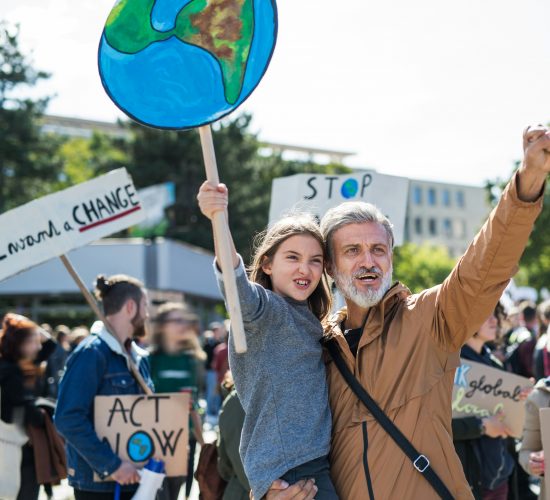Beyond the Smoke: The Role of Carbon Capture in Combating Climate Change

As the world faces the escalating challenges of climate change, carbon capture has emerged as a potential game-changer in reducing greenhouse gas emissions. This technology offers a way to capture carbon dioxide (CO2) emissions from industrial processes and power generation before they enter the atmosphere, thereby mitigating their impact on global warming. In this article, we explore the intricacies of carbon capture, its potential as a climate rescue operation, and the hurdles it must overcome to become a mainstream solution.
Understanding Carbon Capture Technology
Carbon capture technology actively prevents CO2 emissions from reaching the atmosphere by capturing them at their source. This process typically involves three key steps: capturing the CO2, transporting it to a storage site, and securely storing it underground. The technology applies to various industrial processes, including power generation, cement production, and chemical manufacturing, significantly reducing global CO2 emissions.
During the capture phase, various methods, such as post-combustion, pre-combustion, and oxyfuel combustion, are used to capture CO2. For instance, post-combustion capture extracts CO2 from the flue gases produced by burning fossil fuels. Once captured, the CO2 is compressed into a dense form and transported, usually via pipelines, to storage sites. These sites, often geological formations like depleted oil and gas fields or deep saline aquifers, safely and permanently store the CO2. This storage keeps the captured carbon from contributing to atmospheric CO2 levels, thereby helping to mitigate climate change.
The Potential Impact of Carbon Capture on Climate Change
Carbon capture has the potential to significantly reduce global CO2 emissions, particularly in sectors where reducing emissions is otherwise difficult or expensive. For example, industries like cement and steel production, essential to the worldwide economy, are also major sources of CO2 emissions. Implementing carbon capture technology in these industries could drastically cut their carbon footprints, making it an essential tool in the global effort to combat climate change.
BECCS has the potential to achieve negative emissions, meaning it can remove CO2 from the atmosphere. This is particularly important for achieving the ambitious targets set by international climate agreements, such as the Paris Agreement, which aims to limit global temperature rise to below 2 degrees Celsius. By capturing and storing CO2, carbon capture technology could play a crucial role in preventing the worst impacts of climate change and helping the world transition to a sustainable, low-carbon future.
Challenges and Limitations of Carbon Capture
Despite its potential, carbon capture technology faces several significant challenges that must be addressed to become a widespread solution. One of the primary challenges is the high cost of implementing and operating carbon capture systems. Capturing, compressing, transporting, and storing CO2 is energy-intensive and expensive, making it less attractive than other carbon reduction strategies, such as renewable energy or energy efficiency improvements.
Moreover, the infrastructure required for carbon capture is complex and requires significant investment. This includes the capture technology and the pipelines and storage facilities needed to transport and store the captured CO2. The development of this infrastructure can be particularly challenging in regions that need more networks for CO2 transport and storage. Additionally, there are concerns about the long-term safety and stability of CO2 storage sites, particularly the risk of leakage, which could undermine the effectiveness of the technology and pose environmental and public health risks.
The Role of Policy and Innovation in Advancing Carbon Capture
Strong policy support and continued innovation are essential to overcome the challenges associated with carbon capture. Governments can play a critical role by providing financial incentives, such as tax credits or subsidies, to make carbon capture more economically viable. These incentives can offset the high costs of carbon capture systems and encourage more companies to invest in the technology.
Innovation is also key to reducing the costs and improving the efficiency of carbon capture technology. For example, researchers are exploring alternative materials for CO2 capture, such as metal-organic frameworks (MOFs), which could offer higher efficiency at lower costs. Advances in monitoring technology are also crucial for ensuring the long-term safety of CO2 storage sites, providing the necessary assurance that stored CO2 will remain securely contained over time.
The Future of Carbon Capture as a Climate Solution
As the world grapples with the urgent need to reduce greenhouse gas emissions, carbon capture will likely play an increasingly important role in global climate strategies. While challenges remain, the potential benefits of carbon capture make it a critical component of a comprehensive approach to combating climate change. With continued innovation, supportive policies, and increased public awareness, carbon capture could become a more widely adopted solution, particularly in difficult industries to decarbonize.
The future success of carbon capture will depend on a collaborative effort between governments, industry, and the scientific community. As technology advances and costs decrease, carbon capture has the potential to become an accessible and effective tool for reducing CO2 emissions. By integrating carbon capture with other carbon reduction strategies, such as renewable energy, energy efficiency, and reforestation, the world can make significant progress in achieving the goals of the Paris Agreement and limiting global warming to safe levels.
Carbon capture offers a promising pathway for reducing global CO2 emissions and addressing the critical challenge of climate change. Although there are still hurdles to overcome, the ongoing development of carbon capture technology and supportive policy measures could pave the way for widespread adoption. As part of a broader climate strategy, carbon capture has the potential to play a vital role in ensuring a sustainable and low-carbon future, helping to protect the planet for generations to come.
Additional Information
- Blogs
- carbon capture systems, industrial processes, low-carbon future
- David Hastings